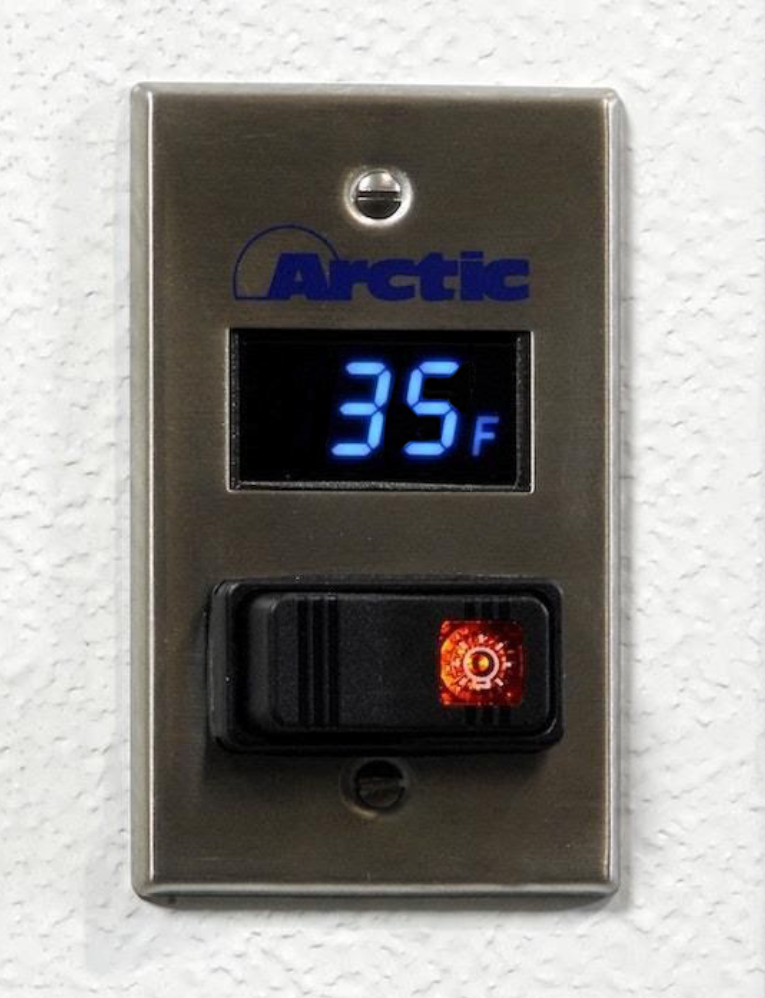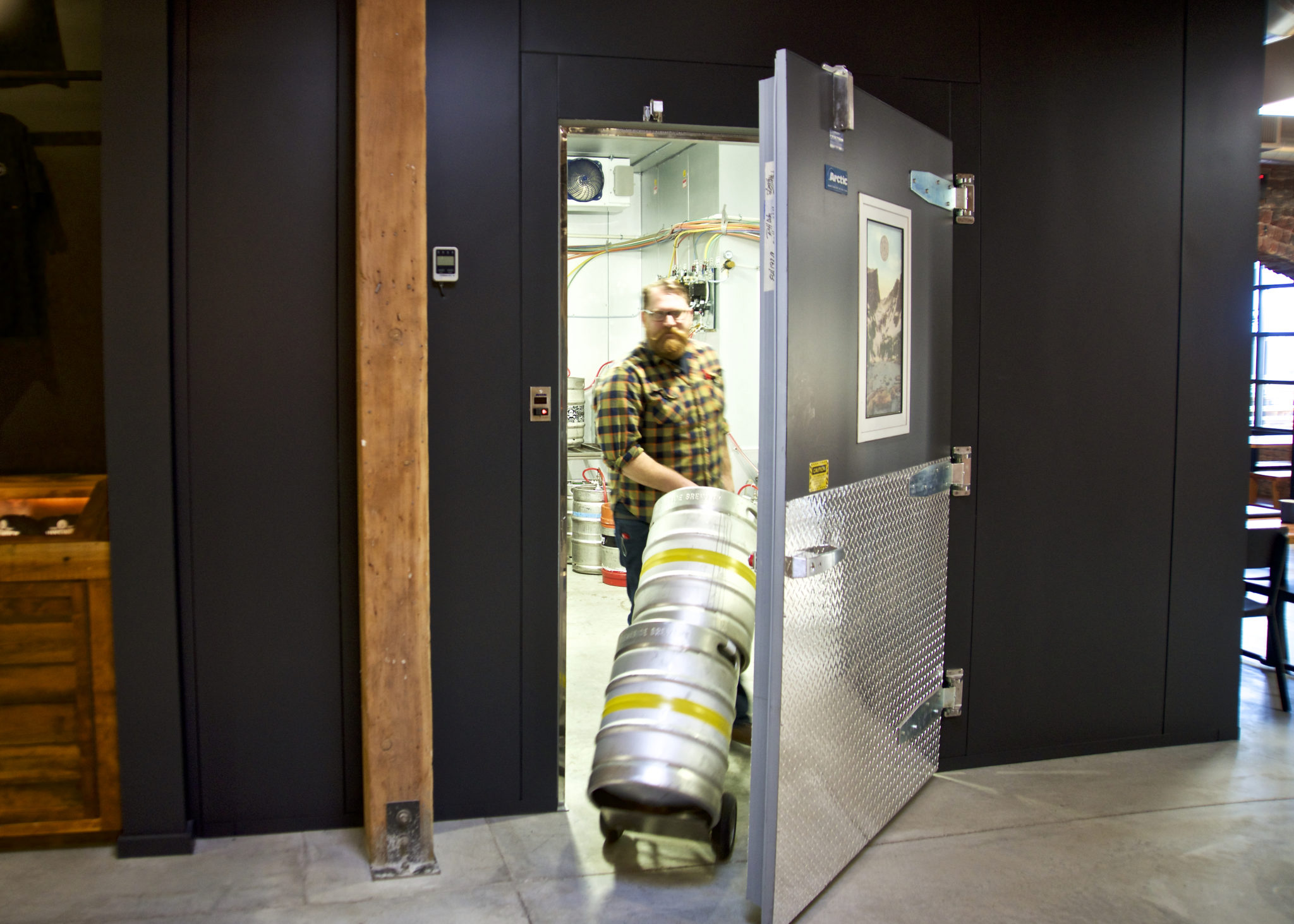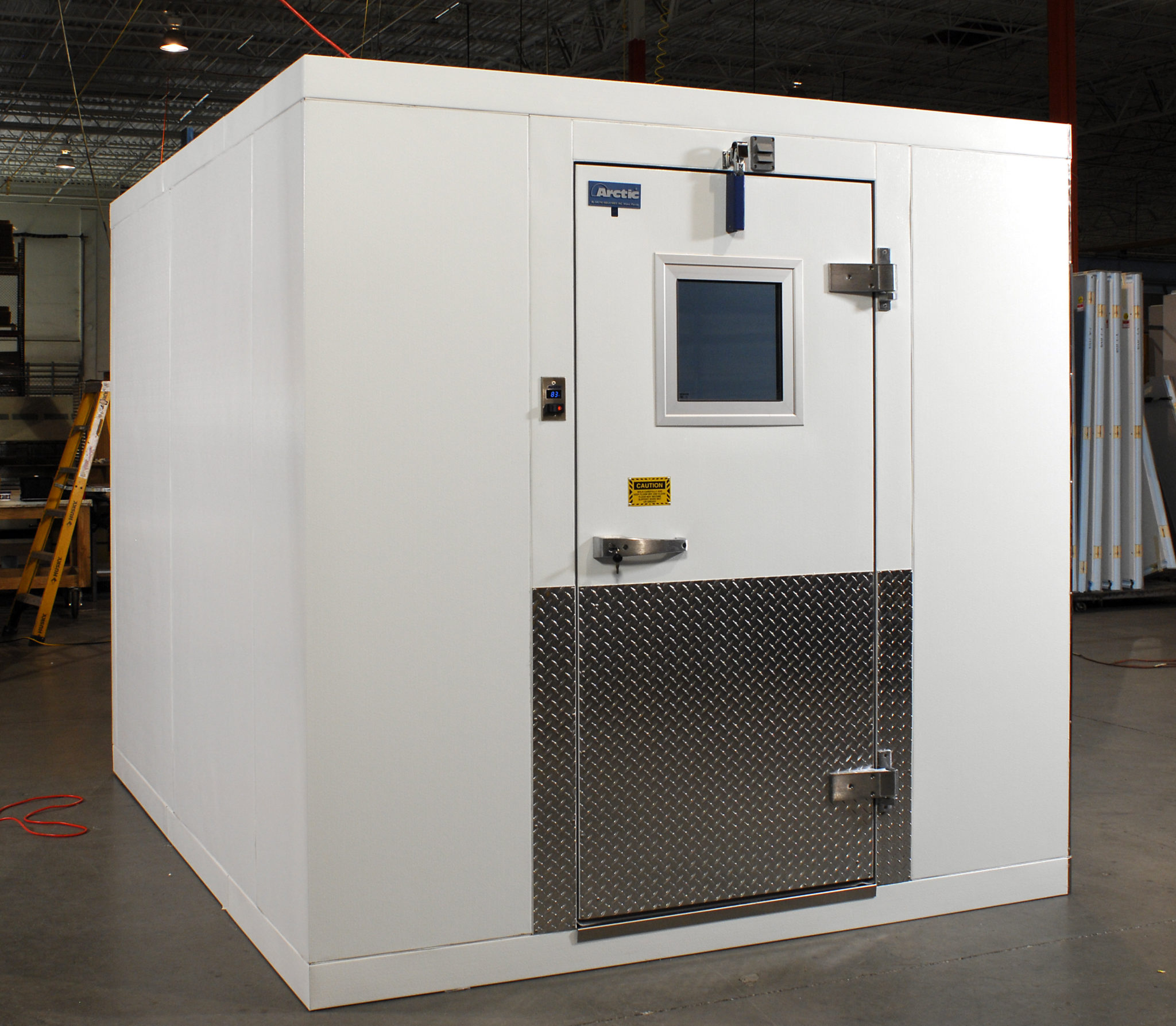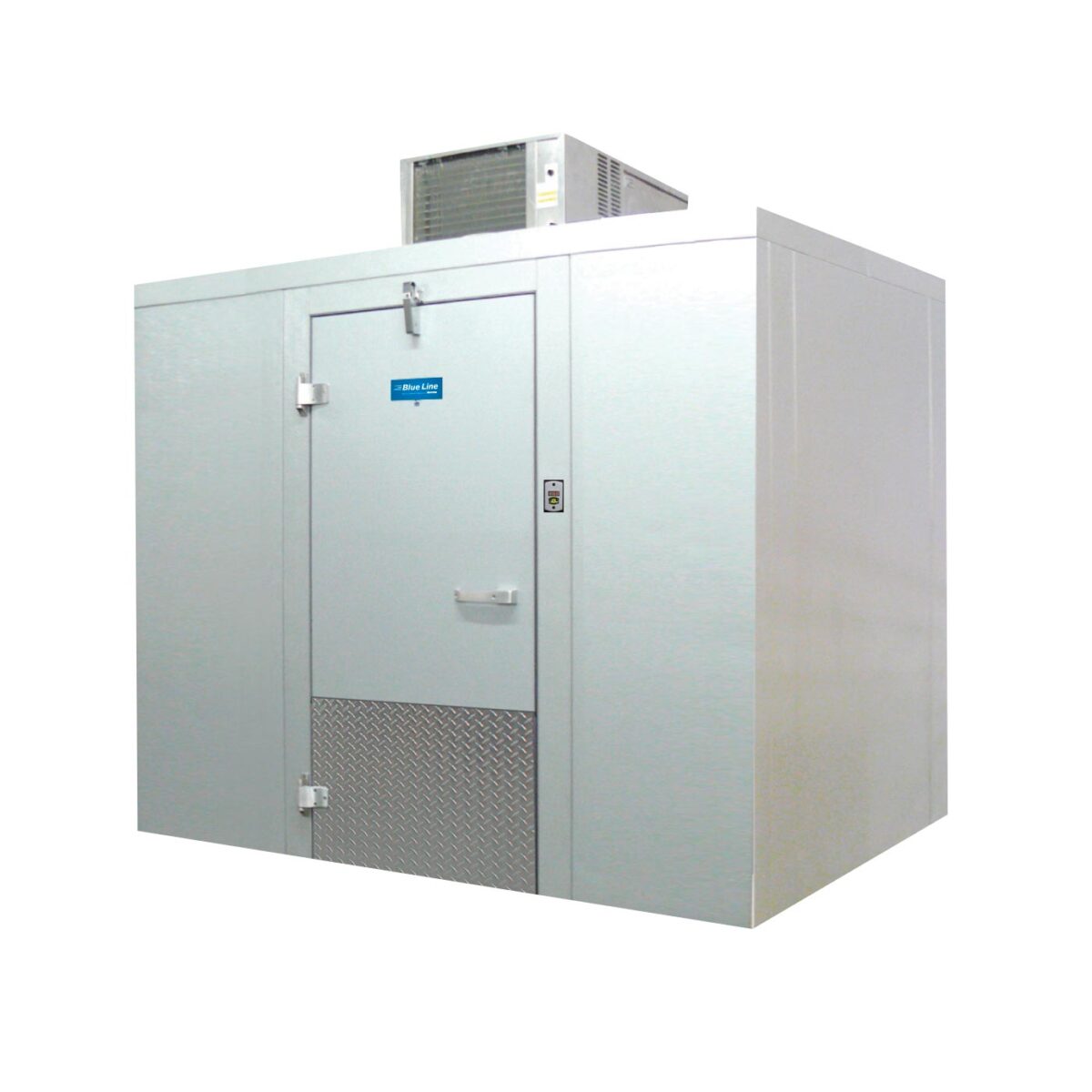MIAMI, FL
November 11, 2020
The temperature of your walk-in directly impacts the quality of the product. A couple degrees too cold and the product can freeze. Too warm? Things will spoil! A carefully monitored walk-in temperature can increase product longevity and save money and hassle. Because of this, it’s important to choose and maintain the ideal temperature for your walk-in. Here we take a closer look into the factors that go into answering the question: what temperature should a walk-in cooler or freezer be?
Cooler vs Freezer
First, do you have a walk-in cooler or a walk-in freezer? Maybe you have both; many businesses find a use for both a walk-in cooler and a walk-in freezer.
This is an altogether greater decision which depends on what products you are storing and the duration they will be kept.


[Image via Arctic Walk-ins]
Walk-In Cooler Temperature
- According to the FDA, food should be kept below 40°F, but ideally lower. Higher temperatures risk the food spoiling too quickly. Additionally, businesses may even face legal issues if items are not kept below 40°F. For walk-in coolers, it’s best practice to set the temperature in the 35-38°F range.
- However, be careful to not let the temperature get too cold. If the temperature drops below 34°F, products might begin to freeze. In the case of dairy products and some produce, freezing and thawing can ruin the texture and quality.
Takeaway: The right temperature for your walk-in balances the need to make food last without getting too frosty. Our advice is to keep it at 35°F.
Walk-In Freezer Temperature
- With the exception of bottled and canned goods and eggs still in their shells, you can freeze nearly all food. However, not all products last the same amount of time. The FDA provides a helpful chart to know how long to keep various products in the freezer. Keep in mind that the more frequent door use in walk-in freezers can impact the temperature of the walk-in, and therefore, the longevity of food.
- For most frozen products, the FDA recommends keeping the freezer set to a temperature between 0 and -10°F.
- However, if you store ice cream in the freezer, this tasty treat has different standards. Keeping the freezer between -20°F and -10°F will be the best choice for ice cream freezers.
Takeaway: For general purposes and applications, keep your freezer around -10°F.
Monitoring and Maintaining the Temperature of Your Walk-In


[Image via Arctic Walk-ins]
Keep the Doors Closed!
Walk-in coolers and freezers differ from reach-in systems since traffic conditions can vary greatly between the two. The resulting increase in air exchange due to heavy traffic and frequent openings can cause greater temperature fluctuations. In addition, leaving the door open (even just a hair) will cause the unit’s temperature to increase and will put unnecessary strain on your refrigeration system.
Too much traffic in and out of the walk-in can cause two major problems:
- First, food may spoil or lose quality with an increase in temperature.
- Second, the evaporator coil can ice over, restricting airflow and raising the temperature of the walk-in as a result. This poses a danger to the overall health of the walk-in. It will subsequently make your walk-in work harder, and reduce its lifespan.
Educate yourself and any staff that also work with the walk-in on the importance of minimizing the time spent with the door open. Installing plastic curtains is recommended to help minimize the effects of prolonged openings and high traffic.
Beware of False Temperature Readings
If you notice a change in temperature on the walk-in’s thermometer, this might be a result of the door opening and closing. To prevent a false read, before performing maintenance checks or calling for a service technician, leave the door closed for 10 minutes. After that waiting period, see if the temperature has returned to normal.
Takeaway: Best practice is to keep the door shut as much as possible.
Tracking Temperature
Once you’ve set a temperature for your walk-in, it’s important to maintain that temperature.
- Most walk-ins have a thermometer on the door to provide easy readings. However, the door thermometers have a 2-5 degree accuracy range.
- Because of possible inaccuracies with the door thermometer, it’s best practice to have a back-up. Place an NSF-approved thermometer inside the walk-in about mid-height and close to the middle of the box (neutral spot). These appliance thermometers are generally inexpensive. And they can be a lifesaver!
- Measure the temperature of your product. Take different measurements around the box. Make sure the product has been stored for at least 12 hours to obtain an accurate reading.
- Additionally, you can monitor the temperature with a log to stay ahead of any fluctuations or changes.


Keep Your Walk-In Up to Snuff
Practicing routine maintenance checks for your walk-in can help prevent any temperature malfunctions. Here are some major items to look out for that can affect temperature changes.
- Door Gaskets: Keep tabs on the wear and tear on the door gaskets. These help keep the cold air in and the warm air out! Periodically wipe down the gaskets with a mild cleaner.
- Evaporator and Condenser: These two parts are key to controlling the temperature of your walk-in. They actually do the cooling! Both have systems of coils that can be cleaned with a shop vacuum.
What Temperature Should My Walk-In Be?
To recap, to answer the question: what temperature should a walk-in be, you must first specify whether you’re working with a walk-in freezer or a walk-in cooler.
For walk-in coolers, we recommend setting the thermostat to 35°F.
For walk-in freezers, we recommend keeping your unit around -10°F.
Finding the right temperature can be a simple process once you know what you are storing. Once you’ve set the thermostat, be sure to maintain good practices around use and upkeep so the temperature stays consistent!

